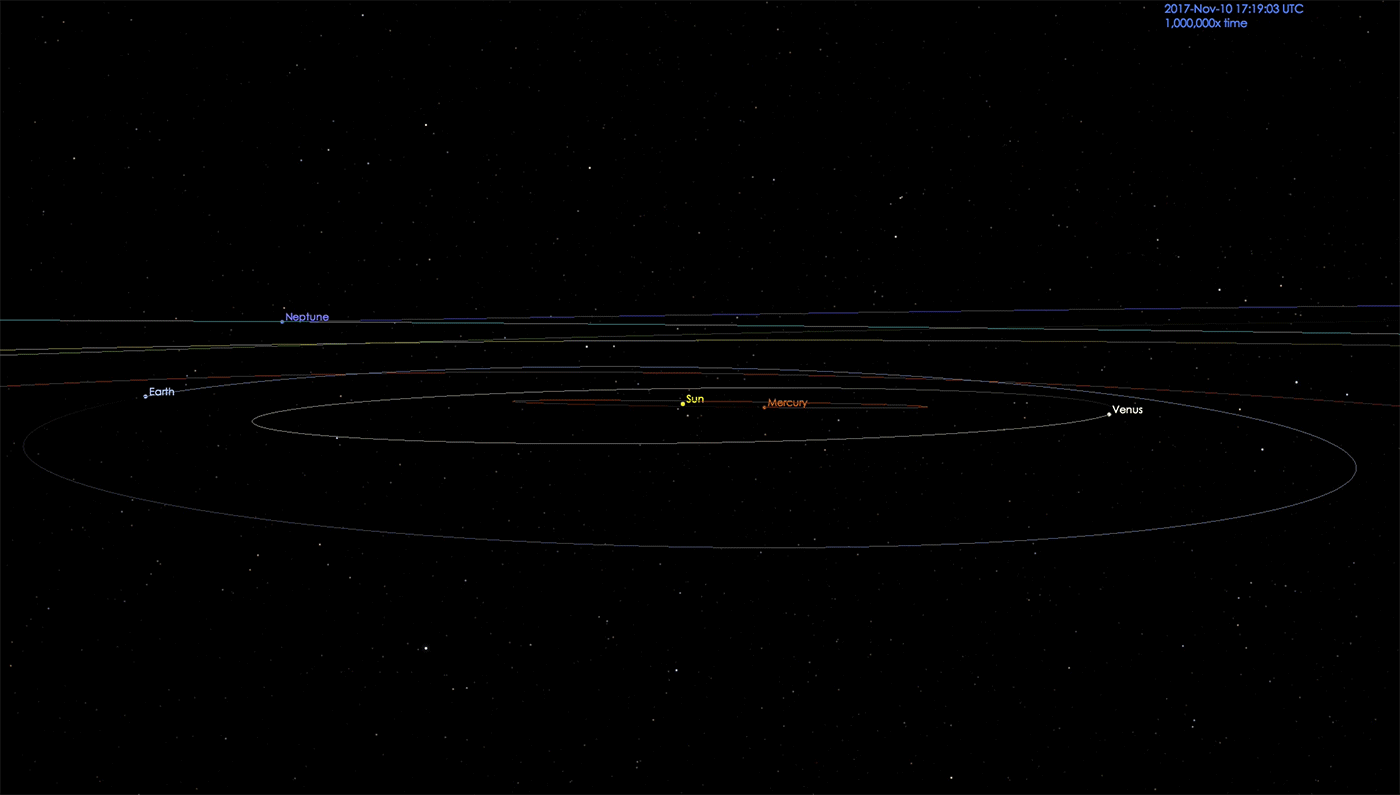Superfast Asteroid Zooms Safely By Earth This Super Bowl Sunday
A fast-moving asteroid will make a close flyby of Earth this Super Bowl Sunday (Feb. 4), but it poses no risk of hitting our planet, according to NASA.
The asteroid, called 2002 AJ129, will make its closest approach to Earth at 4:30 p.m. EST (2130 GMT), and will be about 2.6 million miles (4.2 million kilometers) from our planet at its closest point, NASA officials said. It's traveling at a breathtaking speed of about 76,000 mph (122,310 km/h), faster than most near-Earth asteroids, they added.
But while asteroid 2002 AJ129 is classified as "potentially hazardous" by NASA, at no point now or during the next century does it pose an impact threat to Earth, NASA officials said. Asteroids are classified potentially hazardous if they are larger than 460 feet (140 meters) in diameter and are in orbits that approach within 4.65 million miles (7.48 million km) of Earth. [In Images: Potentially Dangerous Asteroids Tracked by NASA]
"We have been tracking this asteroid for over 14 years and know its orbit very accurately," Paul Chodas, manager of NASA's Center for Near-Earth Object Studies at the Jet Propulsion Laboratory, Pasadena, California, said in the statement. "Our calculations indicate that asteroid 2002 AJ129 has no chance — zero — of colliding with Earth on Feb. 4 or any time over the next 100 years."

The space rock will be no closer than about 10 times the distance between the Earth and moon. (The average distance between the Earth and moon is about 238,855 miles, or about 384,400 km.)
Get the Space.com Newsletter
Breaking space news, the latest updates on rocket launches, skywatching events and more!
Asteroid 2002 AJ129 is a mid-size asteroid that is somewhere between 0.3 miles and 0.75 miles (0.5 to 1.2 kilometers) across. It was discovered on Jan. 15, 2002 by astronomers with a then-NASA-sponsored Near Earth Asteroid Tracking project at the Maui Space Surveillance Site on Haleakala, Hawaii.
The asteroid's unusually fast speed was likely caused by a its orbit, which brings 2002 AJ129 extremely close to the sun, whipping around the star at a range of 11 million miles (18 million km), NASA officials said.
You can see live views of asteroid 2002 AJ129 today here at the Virtual Telescope Project website here at 6 p.m. EST (2300 GMT).
Email Tariq Malik at tmalik@space.com or follow him @tariqjmalik and Google+. Follow us @Spacedotcom, Facebook and Google+. Original article on Space.com.
Join our Space Forums to keep talking space on the latest missions, night sky and more! And if you have a news tip, correction or comment, let us know at: community@space.com.

Tariq is the Editor-in-Chief of Space.com and joined the team in 2001, first as an intern and staff writer, and later as an editor. He covers human spaceflight, exploration and space science, as well as skywatching and entertainment. He became Space.com's Managing Editor in 2009 and Editor-in-Chief in 2019. Before joining Space.com, Tariq was a staff reporter for The Los Angeles Times covering education and city beats in La Habra, Fullerton and Huntington Beach. In October 2022, Tariq received the Harry Kolcum Award for excellence in space reporting from the National Space Club Florida Committee. He is also an Eagle Scout (yes, he has the Space Exploration merit badge) and went to Space Camp four times as a kid and a fifth time as an adult. He has journalism degrees from the University of Southern California and New York University. You can find Tariq at Space.com and as the co-host to the This Week In Space podcast with space historian Rod Pyle on the TWiT network. To see his latest project, you can follow Tariq on Twitter @tariqjmalik.









